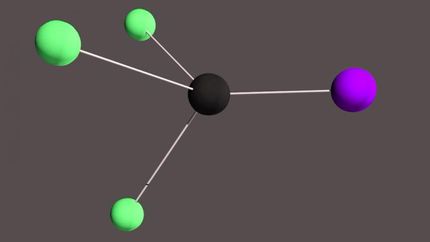Excitation back and forth: X-ray Rabi oscillations between nuclei observed in coupled cavities
Advertisement
X-rays interact weakly with matter. This is their greatest strength for many applications, but also a fundamental weakness for others. In particular the fields of nonlinear optics and quantum optics, mainstays for both fundamental science and technological applications with light, require a strong interaction. Thus, efforts in various directions are undertaken to intensify the light-matter interaction in the X-ray regime. One of the routes towards this goal employs the use of so-called resonant processes. X-ray absorption at atomic resonances (at wavelengths that exactly match the energy required to push the atom in an excited state) can be orders of magnitude larger than off-resonance. A new study led by DESY scientist Ralf Röhlsberger now shows a novel way to enhance and control the interaction of X-rays with resonant atomic systems.

Symbolic illustration of the interaction of two thin sheets of Mössbauer nuclei with an X-ray beam that undergoes multiple reflections in a system of two coupled cavities. The strong radiative coupling of the nuclei in the cavities leads to a periodic exchange of excitation energy between the two nuclear ensembles, the so-called Rabi oscillations.
DESY, Ralf Röhlsberger/Boris Kumicak
The ultimate level in the light-matter interaction in this respect would be the formation of a compound state of light and matter. In this case the excitation energy is periodically emitted and reabsorbed multiple times within the sample. “These '“Rabi-oscillations'” manifest as a characteristic temporal pattern in the light emitted byleaking out of the system,” explains Röhlsberger. In the X-ray range, the strongest resonances of all matter are found in the nuclei of the so-called Mössbauer isotopes (named after Rudolf Mössbauer, Nobel Prize in Physics 1961) . They offer the additional advantage that their lifetime can be several ten nanoseconds long (a nanosecond is a billionth of a second) so that their temporal dynamics can be conveniently observed. Researchers from DESY in Hamburg, the Max-Planck-Institute for Nuclear Physics in Heidelberg, and the European Synchrotron Radiation facility in Grenoble have now observed Rabi oscillations in the X-ray regime for the first time, using a certain form of elemental iron (the Mössbauer isotope 57Fe).
“Normally, Rabi oscillations are observed in optical cavities,” says first author Johann Haber from DESY. These are essentially two mirrors between which light bounces back and forth. If an atom is placed between them, the atom can absorb and re-emit that radiation – since the mirrors will reflect it back to them, this process can repeat itself for some time, leading to Rabi-oscillations. “However, this is not an option for X-ray physics, as there are no such mirrors for X-rays as there are for visible light,” explains Haber. “While it is possible to fabricate X-ray cavities and to observe a number of quantum optical phenomena with them, the strong coupling limit is clearly out of reach in such systems. The reason is simply that the resonance lifetime of the bare cavity is so short, (in the range of femtoseconds,; that is means quadrillionths of a second,) that a photon emitted into the cavity rather leaves the cavity instead of interacting with the nuclei again.”
Hence, a different approach was needed. The trick was the preparation of two coupled cavities, each of which contained a thin layer of 57Fe nuclei. “This changes the situation drastically,” says Röhlsberger. “If one of the layers emits a photon, this photon almost instantly escapes the cavity. But it is as likely as not to move into the adjacent cavity, where it would be absorbed by the second layer of 57Fe nuclei. Upon emitting, this process repeats. In a way, the photon is now exchanged not between the cavity mode and an atom, but between two ensembles of atoms.”
This trick opens novel perspectives to observe nonlinear optical effects in the X-ray regime. “An interesting avenue of research would be to examine whether non-linearities occur when more than just one photon enters the system,” says co-author Adriana Palffy from the Max Planck Institute for Nuclear Physics. “This has been observed with optical radiation, and could be repeated in the X-ray range, for example at the new European XFEL, the free-electron X-ray laser in Hamburg.” Moreover, these coupled cavities might be employed to generate non-classical states of X-rays which could facilitate the realization of entirely new X-ray techniques, like imaging or spectroscopy with so-called entangled photonic states.

































































